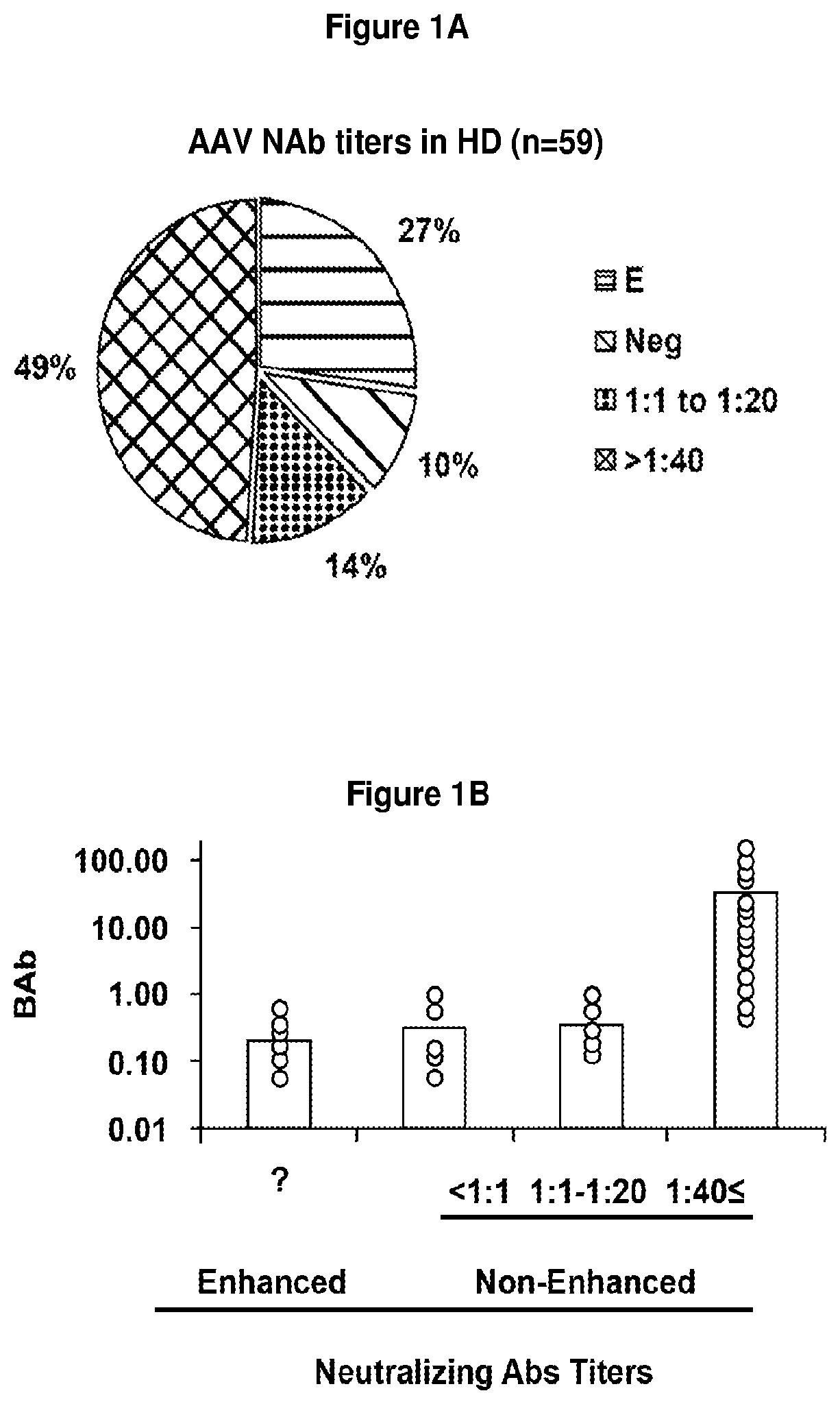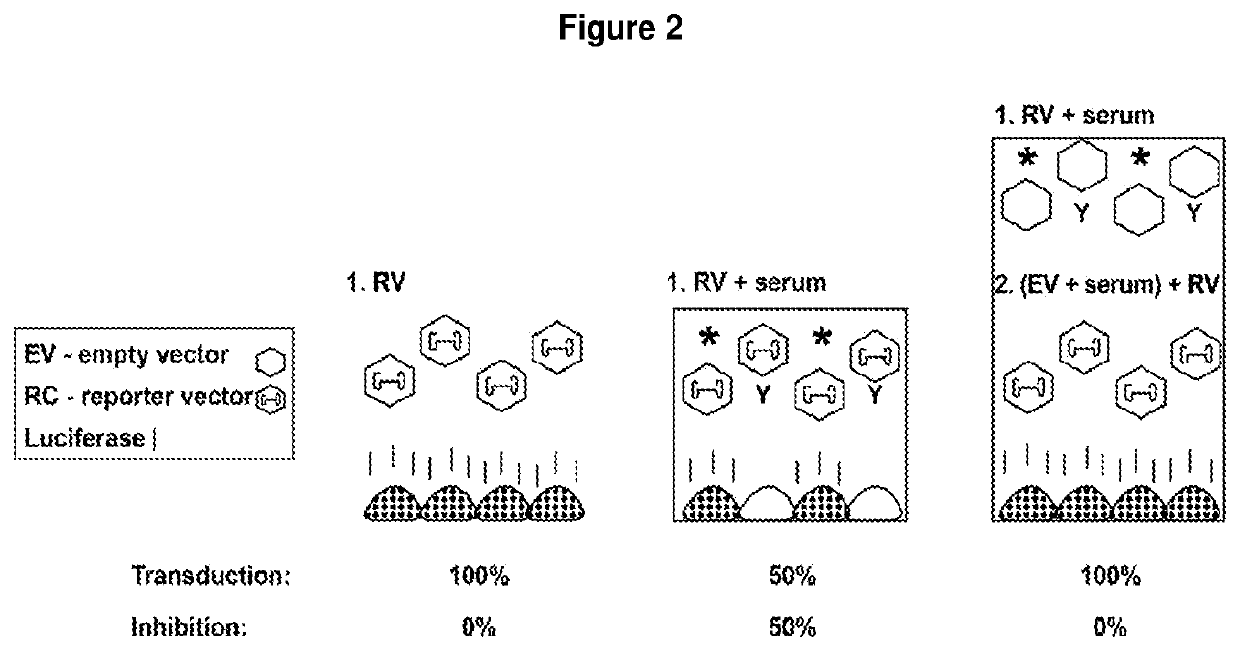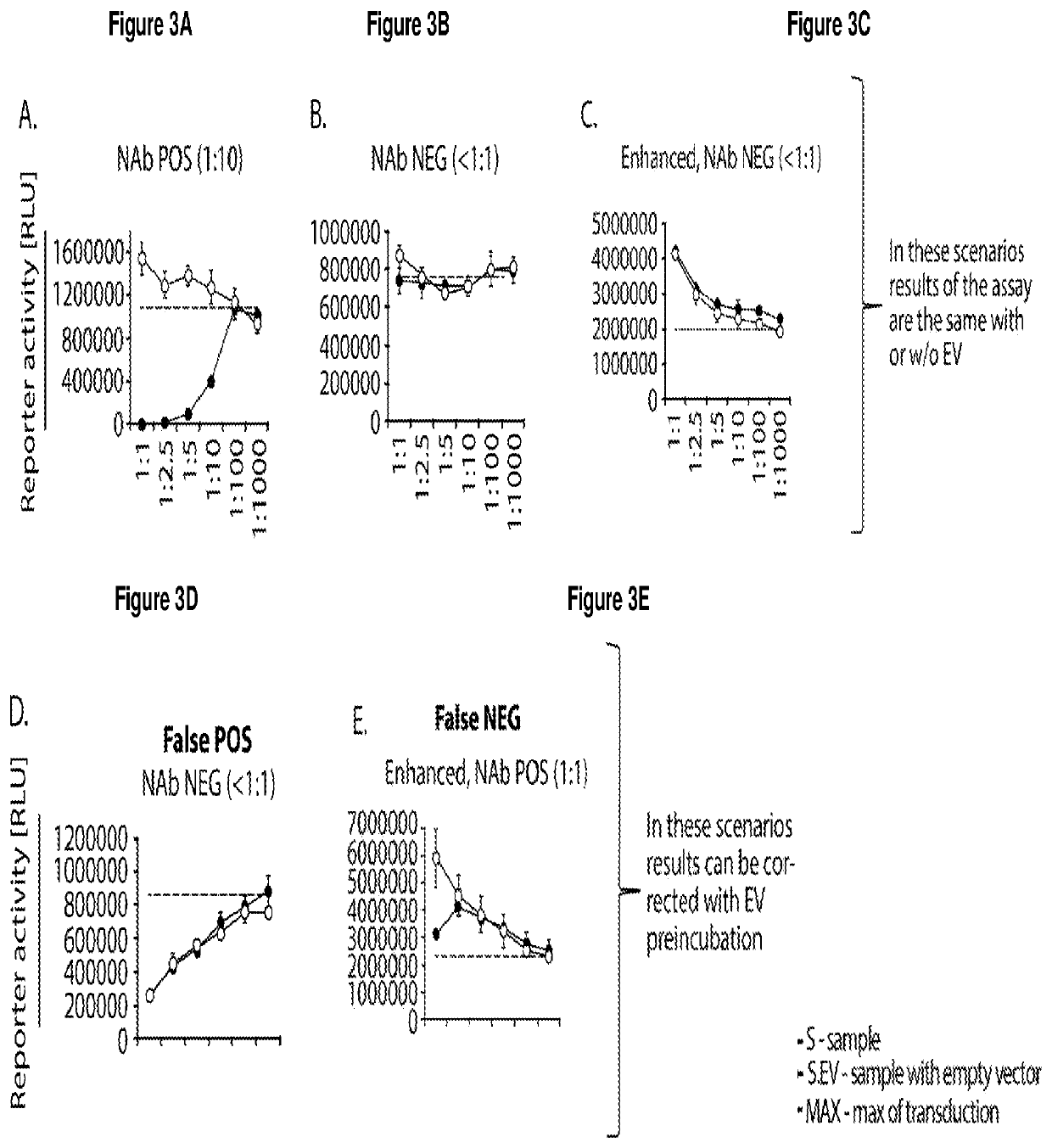In vitro assay for detecting enhancers and inhibitors of adeno associated virus (AAV) vector transduction and/or detecting or quantitating Anti-aav binding antibodies
a technology of adenoassociated virus and adenoassociated virus, which is applied in the field of in vitro assay for detecting enhancers and inhibitors of adenoassociated virus (aav) vector transduction and/or detecting or quantifying anti-aav binding antibodies, can solve the problems of less optimal candidates for gene therapy treatment, patients without access to potentially life-saving therapies, and neutralizing antibodies (nabs)
- Summary
- Abstract
- Description
- Claims
- Application Information
AI Technical Summary
Benefits of technology
Problems solved by technology
Method used
Image
Examples
example 1
[0310]This is a description of an exemplary cell-based in vitro assay for determining the anti-AAV neutralizing antibody (NAb) titer from serum or plasma samples using an AAV vector expressing luciferase as a reporter transgene.
[0311]This description is applicable to determine AAV NAb titers in serum and plasma and other biological samples from human clinical trial subjects, and pre- or non-clinical studies, human candidates for gene therapy treatment methods, as well as monitoring subjects for AAV NAbs, such as subjects who have received a gene therapy treatment or subjects who are at risk or have developed AAV NAbs, and where it is desirable to determine the presence or amount of NAbs before and / or after a treatment, and optionally to reduce the amount of AAV NAbs.
[0312]The exemplary 2V6.11 cell line used (Mohammadi, et al. Nucl. Acids Res. 32:2652 (2004)) is a genetically modified Human Embryonic Kidney (HEK) 293 cell line that stably expresses the E4 gene from adenovirus. E4 gen...
example 2
[0320]
Key TermsDefinitionAAVAdeno-Associated VirusBSCBiological Safety CabinetCVCoefficient of VariationcDMEMComplete DMEMDMEMDulbecco's Modified Eagles's MediumDPBSPhosphate Buffered Saline, no calcium, no magnesiumEVEmpty vector (AAV empty capsid particles)FBSFetal Bovine SerumGLucGaussia luciferasehrhourFACTFactor Assay Control PlasmaMinMinuteNANot ApplicableNAbNeutralizing AntibodyNEGNegative ControlPOSPositive ControlRLURelative luminescence unitsRVReporter vector (e.g., AAV-CAG-GLuc2; AAV-CAG-Luciferase)RTRoom temperature (ambient)SDStandard DeviationVolVolumeMIN (Minimum of transduction)Control of a background luminescence produced by culture plate orautoluminescence of the Renilla luciferase substrate, coelenterazine. This iscaused by nonenzymatic oxidation of the coelenterazine in solution. Assay wellsindicated as MIN contain only cells and FBS, but no AAV reporter vector.MAX (Maximum ofControl that estimates the maximal level of cell transduction that can be obtainedtransd...
example 3
Materials and Equipment
[0321]Cells were 2V6.11 cell line (Mohammadi, et al. Nucl. Acids Res. 32:2652 (2004)), which is a Human Embryonic Kidney (HEK) cell line stably expressing Adenoviral E4 gene. Master, Working, and Assay-Ready Cell Banks are generated. The “cell bank” aliquots, 1e7 / mL, are stored in liquid nitrogen.
Reagents and Storage Conditions
[0322]
StorageReagentsConditionDensity-gradient purified AAV-CAG-GLuc2 vector.−80° C.AAV Empty capsid particles.−80° C.Renilla Luciferase Assay System, Promega,−20° C.Cat # E2820.FACT (Pooled Normal Plasma), George King−80° C.Bio-Medical INC Cat# 0020-1Ponasterone A, Life Technologies, Cat # H101-01,−20° C.DMEM (Dulbecco's Modified Eagle's Medium), 4° C.Life Technologies, Cat # 11965-084DPBS (Dulbecco's Phosphate Buffered Saline),ambientno calcium, no magnesium, Life Technologies,Cat # 14190-235FBS, heat-inactivated, Certified, US origin,−20° C.Life Technologies Cat # 10082147Penicillin-Streptomycin-Glutamine (100X),−20° C.Gibco, Cat #103...
PUM
| Property | Measurement | Unit |
|---|---|---|
| concentration | aaaaa | aaaaa |
| volumes | aaaaa | aaaaa |
| volume | aaaaa | aaaaa |
Abstract
Description
Claims
Application Information
 Login to View More
Login to View More - R&D
- Intellectual Property
- Life Sciences
- Materials
- Tech Scout
- Unparalleled Data Quality
- Higher Quality Content
- 60% Fewer Hallucinations
Browse by: Latest US Patents, China's latest patents, Technical Efficacy Thesaurus, Application Domain, Technology Topic, Popular Technical Reports.
© 2025 PatSnap. All rights reserved.Legal|Privacy policy|Modern Slavery Act Transparency Statement|Sitemap|About US| Contact US: help@patsnap.com



